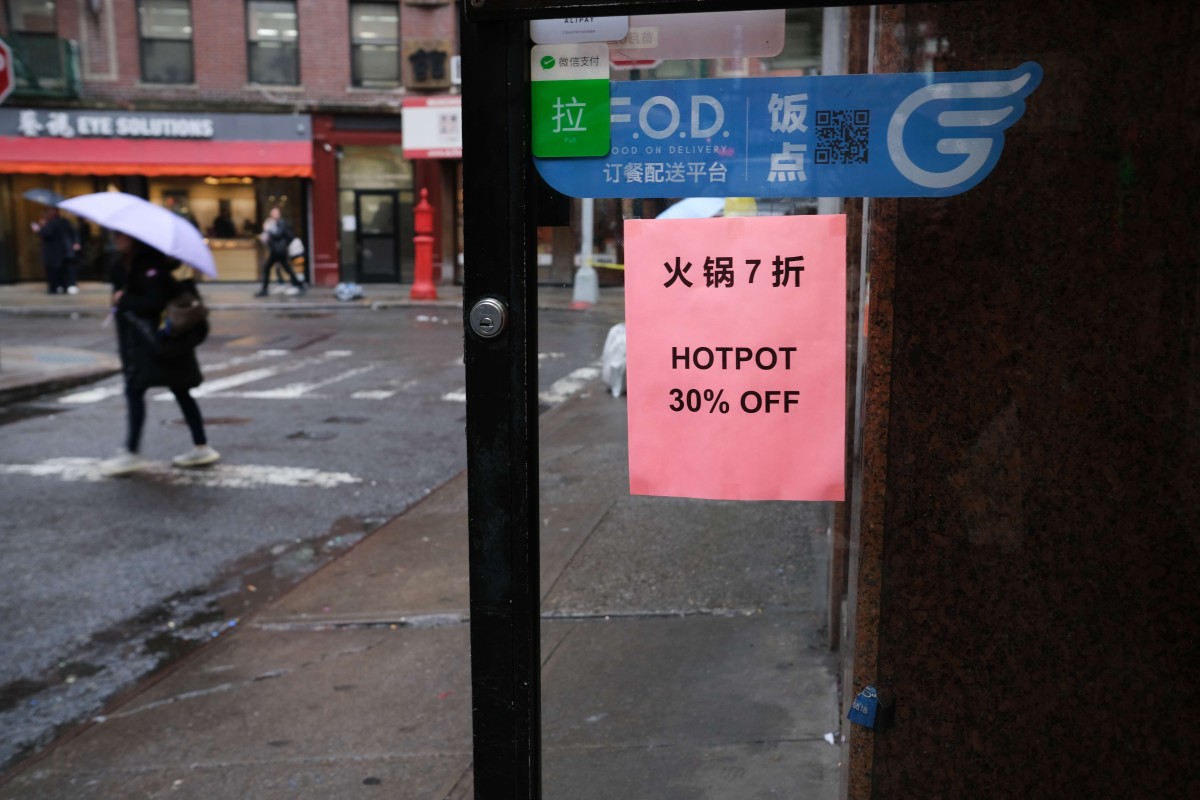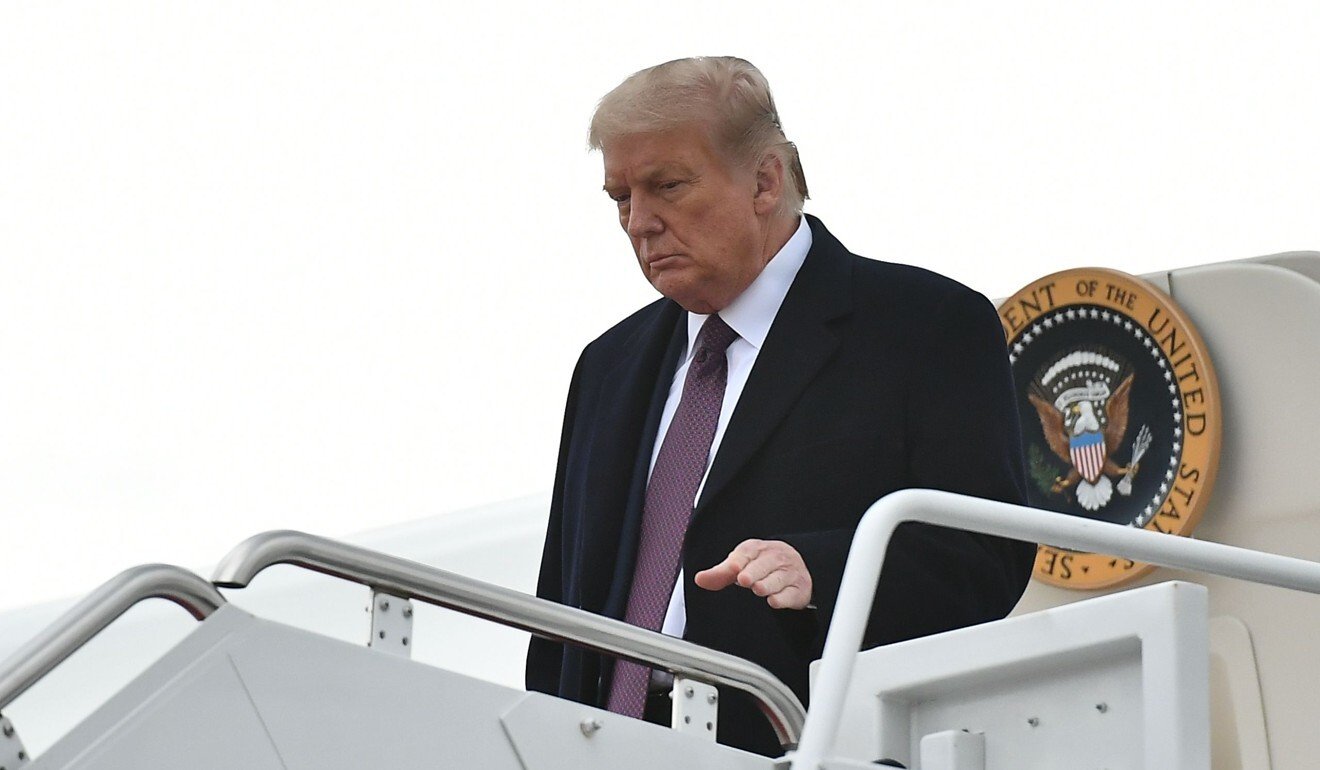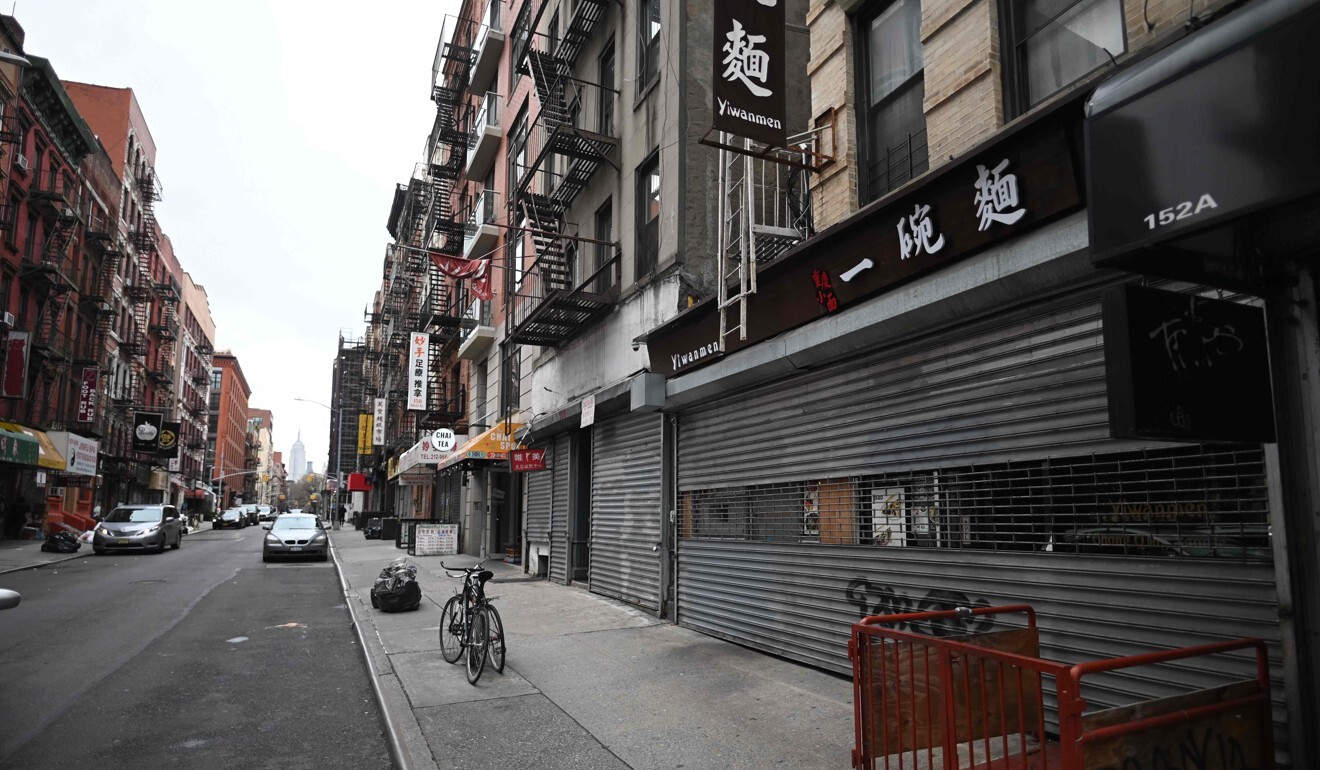
‘They’re in the wrong occupations and wrong industries, which before Covid-19 were doing fine but now have really suffered,’ a labour economist says
Among the sectors where Asian-Americans tend to be concentrated are travel and leisure, gaming, restaurants, light industry and personal care

September unemployment figures to be released on Friday are expected to show more bad news for Asian-Americans, who have lost jobs in disproportionate numbers since the coronavirus pandemic upended the US economy.
A US minority that has typically had some of the lowest unemployment rates of any ethnic group, including white people, Asian-Americans have been hit hard since February, particularly those aged 16 to 24. That group, which has seen a 300 per cent rise in joblessness since the pandemic hit, is worse off than young white and Hispanic people, although it is still better off than African-Americans, according to USAFacts and the US Bureau of Labor Statistics.
“It’s a perfect storm, or a bad perfect storm or a perfect bad storm,” said Marlene Kim, a labour economist at the University of Massachusetts in Boston. “They’re in the wrong occupations and wrong industries, which before Covid-19 were doing fine but now have really suffered.”
Among those hard-hit parts of the economy where Asian-Americans tend to be concentrated are travel and leisure, gaming, light industry and personal care.
Even when they’re in an industry that has managed to survive and even thrive, Asian-Americans often find themselves in the wrong aisle. Thus while parts of the food and beverage sector such as grocery and liquor stores have done well, Asian-Americans tend to be the cooks, waiters and delivery people in the hard-hit restaurant sector.
A woman who answered the phone at the Hong Hong Employment Agency in New York’s Chinatown, a company that specialises in helping those seeking restaurant jobs, said so many establishments have closed that finding spots for jobseekers is tough.
“I barely have a job myself,” said the agency worker, who declined to give her name. “I’m down to two hours a day.”
Similarly, those at higher socio-economic levels in education, for instance, tend to teach at the university level which has been hard hit by student defections and deferrals, not in primary, junior high and high schools where participation is mandatory.
The results also underscore the fact that the Asian-American community – often considered a “model minority” that studies diligently, works hard and becomes successful without making trouble – is much more varied than generally appreciated, say analysts.
“There is an image that all Asian-Americans are immigrants, that all Asian-Americans are rich. It’s because of that movie Crazy Rich Asians,” said Frank Wu, president of Queens College in New York. “The truth is much more complicated.”
While they make up the fastest-growing ethnic group in America and are on average wealthier and better educated than society as a whole – led by those of Chinese, Indian, Korean and Japanese descent – they also have huge numbers of Southeast Asians, Afghans and others with limited skills, capital or training, analysts said.
Discrimination has also played a large role, with US President Donald Trump setting the tone, experts said.

“There’s been a spike in racial animus and discriminatory treatment that’s been promoted by Trump, who calls this a Chinese virus and blames China for the virus, which is absurd,” said Kent Wong, director of a labour research centre at the University of California, Los Angeles.
“When people hear that language from Trump and the right-wing media, it just makes it worse,” added Wong, a third generation Asian-American whose family was originally from Guangzhou.
According to STOP AAPI Hate, a community coalition that tracks discrimination, more than 2,100 anti-Asian-American hate incidents related to Covid-19 were reported nationwide between March and June, with their prevalence spiking after Trump repeatedly used the terms “Chinese virus” and “kung flu”.
Also in the wrong-place-at-the-wrong-time category, Asian-Americans are heavily concentrated in California and New York, which have seen some of the highest infection and mortality rates. But that concentration is not an accident, analysts said. Many Chinese and other Asians originally settled in farming and ranching areas in the West and Midwest, only to be driven out.
Kim, from a Japanese and Korean family, said her grandfather lived in Superior, Wyoming. “But white workers burned the town down, with over 30 people killed, and told them to leave,” a common pattern from the mid 1800s through the 1920s, she said. “This happened all over the country. So the only safe places were certain Chinatowns. It isn’t that Asians didn’t want be there.”
Also a factor, labour experts said, is that Asians, perhaps in part because they are better educated and need to pay back their student loans, continue looking for jobs. A quirk of the US unemployment statistics is that those who stop searching after four weeks are deemed to have left the workforce and not counted as jobless, which may increase the Asian-American numbers.

Many in the community also tend to have their own businesses.
Lisa Shan, owner of a small company that supplies disposable chopsticks, plates and containers to restaurants in New York’s Flushing neighbourhood, said she is down to two employees from six before the pandemic. “I kept those two because they’re doing everything,” she said. “They’re new immigrants who’ve been with me for three years and they’re willing to work hard. Once you have someone for 10 years, they get lazy.”
Experts said it could take years for many of the jobs that Asian-Americans have lost to come back as consumers rethink their use of restaurants, hotels, tour bus operations, physical therapists and nail salons.
“For Chinese immigrants and other Asian immigrants, their strength is their weakness,” said Wu. “They’re over-represented as entrepreneurs and small-business people, which is a huge strength since they can adapt and move quickly. But it also depends on cash flow. They can start up fast but they can fail fast.”
Asian-American men aged 16 to 24 had an unemployment rate of 22.1 per cent in August compared with 5.5 per cent in February, while Asian-American women in the same age group were at 20.3 and 7.4 per cent respectively, according to USAFacts. This compared with around 12 per cent for young whites, 15 per cent for Hispanics and 24 per cent for blacks in August.
“It really shot up,” said Olivia Martin, a data analyst with the non-profit data group. “It’s pretty unusual.”
Unemployment rates across all working ages in August were 7.3 per cent for white people, 10.5 per cent for Hispanic people, 10.7 per cent for people of Asian descent and 13.0 per cent for black people, according to the US Labour Department.
Experts said Asian-Americans could face a tough slog after struggling to get a foothold in the US economy against many odds. Many of their service businesses are in downtown areas reliant on foot traffic even as companies reconsider the need for expensive office space in favour of telework.
“Plus, a lot of these restaurants are closing for good, and a lot of people are saying they won’t get the vaccine,” said Kim. “I’m not sure it will ever go back to the same level.”
Source china morning post


Comment